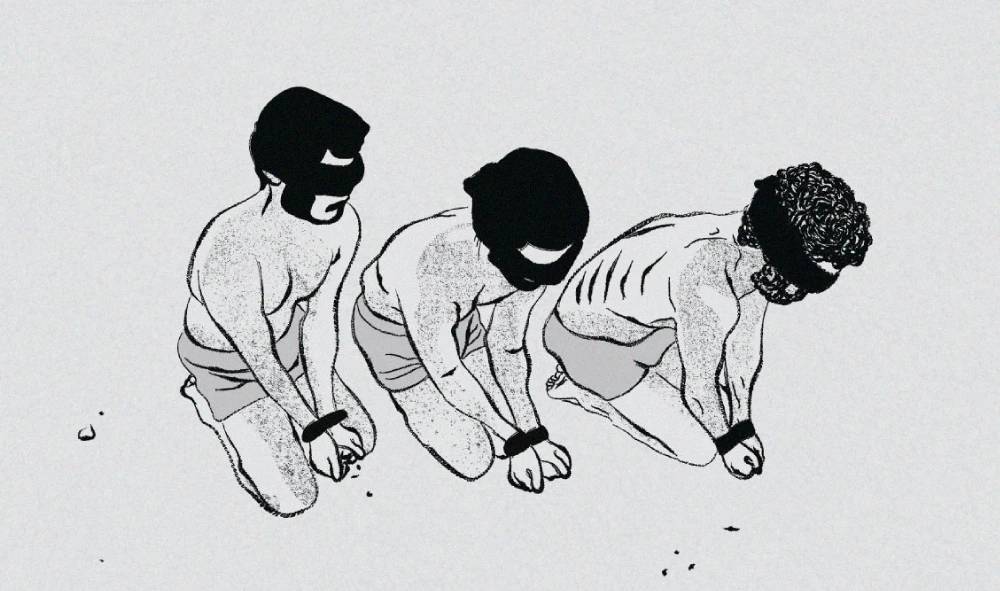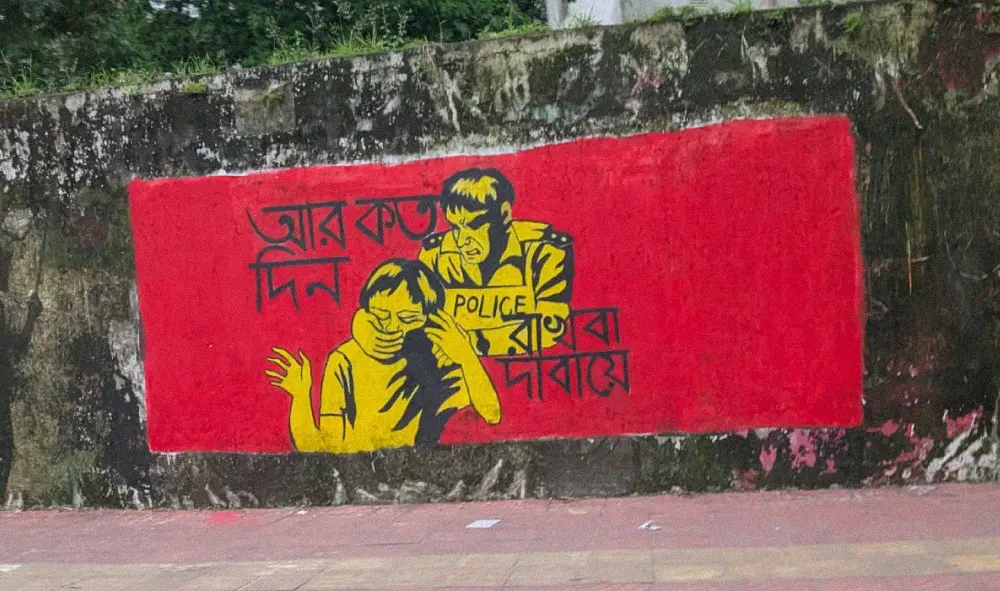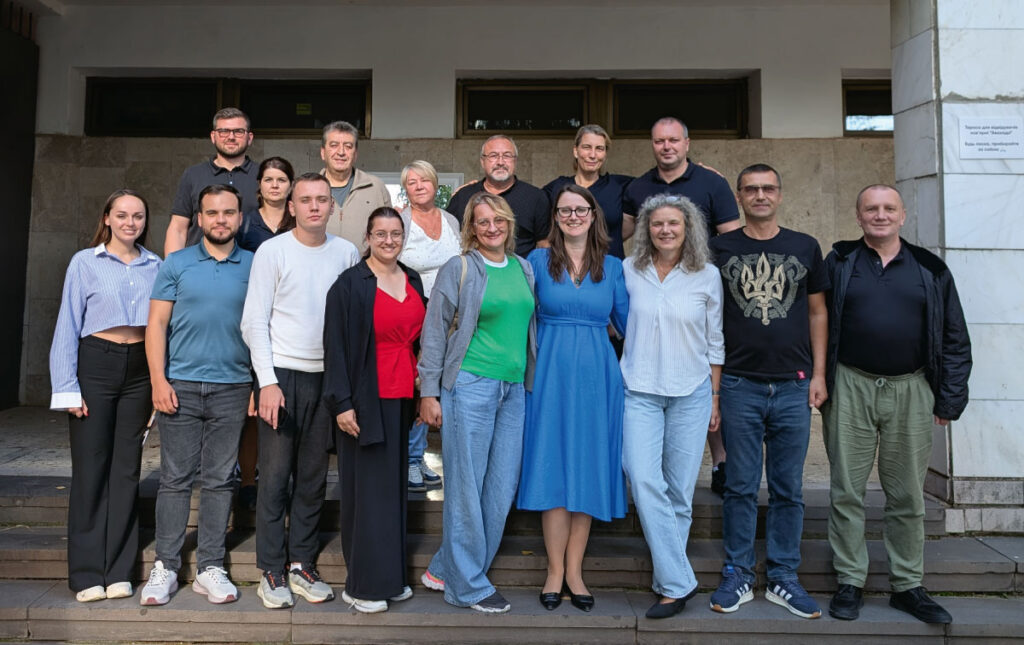For the past year, you have been working with our Palestinian partners to analyze 100 testimonies with reports of torture and inhumane treatment of Palestinians from Gaza. Based on your findings, how would you categorize the treatment of Palestinians in Israeli prisons and detentions?
The striking thing about these testimonies is their consistency. The 100 people repeat many of the same details about the detention conditions and how they were treated, regardless of who the person is – young or old, male or female. This means that the poor detention conditions and the survivors’ ill-treatment are universal. The testimonies were collected between October 2023 to October 2024.
The conditions of detention recounted are in violation of many elements of the UN Standard Minimum Rules for the Treatment of Prisoners (the Nelson Mandela Rules), which set minimum standards for how people in prison should be treated.
Finally, the ill-treatment and torture methods they describe are very serious, with dire acute and potential chronic physical and mental health consequences.
What do we know about the prison conditions?
Firstly, we have the arrest process where many were forced to strip to their underwear in public and not told why they were being arrested or where they were going.
Secondly, in detention, cells were overcrowded, food and drinking water were scarce and of reportedly poor quality. Hygiene conditions were poor – they were not allowed access to toilets and showers on a frequent basis. Some report having to urinate on themselves or on the cell floor. Others report being taken to the toilet while handcuffed and blindfolded. Some interviewees talk about filthy conditions, not being allowed clean bedding or clothes, and consequently lice and scabies spreading among them. Some interviewees talked about not being allowed to pray or being mocked or even beaten when they did so.
What do we know about the torture methods?
There were many more methods of deliberate infliction of pain and suffering. For example, shabh was very common. This is a form of suspension torture where a person is tied and suspended by their wrists, for example so their entire body weight is borne by the wrists. Some stayed in that position for many hours and when the ordeal was over, it was repeated the next day. Another common method practiced by the Israeli authorities is extended forced positions. Survivors were ordered to kneel on their knees on a surface such as gravel with their heads down for many hours. And this was accompanied by very tight handcuffing. Handcuffing is not illegal or considered as torture or inhuman treatment under normal circumstances. But it seems that the handbook on handcuffing has been re-written by Israeli forces. They used plastic ties which were often excessively tight and for such a long time that amputations have been reported as a result. Amputations due to handcuffing is not something we had seen as a common result of handcuffing prior to this. It is documented in the and corroborated by other organizations and even Israeli physicians themselves in the media.
Other reported methods include electrocution, beating with batons, shoes, hands and other tools to different body parts, including on injuries, dragging across gravel, pushing off of vehicles, and so on. Threats of death or harm to loved ones were common. Survivors report being locked in rooms with very loud music or very cold or hot air being subjected to the voices of people seemingly being tortured, being deprived of sleep, being subjected to pepper spray in closed cells, and getting attacked by dogs. Some recount being given medications before interrogations without being told what they were or having their blood drawn without explanation. Several interviewees recount how they were used as human shields being ordered to enter buildings to check for explosives or being forced to detonate them. The variety of methods recounted by the 100 interviewers is large and disturbing.
Can you elaborate on the psychological and physiological effects of these methods?
A clear theme ties together many of the detention conditions and methods described by the 100 survivors — that theme is humiliation coupled with brutal forms of torture. Not only were survivors subjected to physical pain, but they recount stories demonstrating that humiliation was an intention for many methods. For example, many were forced to strip off their clothes and subjected to searches in front of soldiers from the opposite sex. Or even on the street before arrest in front of many people. Survivors were forced to insult themselves or sing. Some were urinated on by dogs or by Israeli soldiers. Even on release, they were taken to an open space and ordered to run away while soldiers fired shots close to them. So, the psychological effects of this experience are important and many. Fear for one’s life and the life of their loved ones, anger, shock, feelings of utter humiliation and defeat were all described. As for the physical consequences, we know from our previous work that many of the methods described can have dire health effects.
Some report immediate effects, like broken bones and amputated limbs, fainting, visual and hearing problems, and so on. Others report more long-term consequences that were still present during the interviews such as chronic pain, nerve damage, reduced mobility, wounds, breathing difficulties, weight loss, and so on.
Sexual violence can have a particularly pronounced effect on survivors both psychological and physical depending on the circumstances. The survivors recounted sexually explicit insults and degrading comments such as being called »whores«. A woman recalled being stripped of her hijab, thrown into the corner of an armoured vehicle and men, reduced to their underwear, being thrown on top of her while the soldiers laughed and took photos of them. Several women and men reported being groped by Israeli soldiers. In addition to the sexual assaults, threats of rape and witnessing the rape of others were recounted. This sexual torture is known to cause shame, humiliation and a sense of helplessness in many survivors.
What role do medical professionals play in these settings, and are there documented cases of complicity or neglect in relation to detainees’ health and well-being?
First, it was difficult for some survivors to even reach medical personnel. For example, one interviewee was denied treatment for a severely swollen foot caused by shackling and was only taken to the hospital when it became so infected that amputation was necessary.
Medical personnel were present in those places of detention. Some interviewees were seen by medical personnel on arrival, which is one of the minimum standards stipulated by the Mandela Rules. Among the purposes of this initial medical assessment is to document and report any abuse that may have taken place during the arrest. None of the survivors report that their abuse was documented. Some even recount being seen by doctors right after torture and yet not one tells us that the medical personnel reported on this abuse – one of the key roles of medical personnel in detention.
Some survivors recount rough treatment by medical personnel. For example, being told »I don’t care about your health condition, may you all die…our dogs matter more than you«. Two survivors had to undergo medical surgery because of the abuse. They described surgery conditions which are not at all aligned with the ethical treatment of patients. Their descriptions are echo what Israeli doctors have talked about in the media. The survivors report undergoing surgery and even recovery while both their legs and arms were tied to the bed, while wearing diapers because they were not allowed to go to the bathroom and not being informed by the medical personnel what was happening to them.
How do your findings align with what has previously been reported by human rights organizations on reports on torture and ill treatment inside Israeli prisons and detention?
Allegations of torture in Israeli prisons and detention have been made for decades by Israeli and Palestinian human rights organizations. For example, over 1,400 torture complaints were filed by the Israeli NGO, Public Committee against Torture in Israel (PCATI) since 2001. In 2008, a coalition of 14 Israeli and Palestinian NGOs issued a report about the “widespread and systematic” use of torture by Israeli authorities. In 2016, the UN Committee against Torture had raised numerous concerns about the treatment of Palestinians in Israeli detention. This is all predating October 7th, 2023 after which reports of ill-treatment and torture have only increased.
From a preventive perspective, what steps need to be taken now to halt these violations and ensure the protection of detainees moving forward?
First, Israeli health professionals working in detention places should align themselves with medical ethics by reporting all suspected incidences of abuse of detained Palestinians, and treat all people regardless of their religion or ethnicity as equal patients.
Second, States should insist on unhindered access to Israeli medical facilities and places of detention for the International Committee of the Red Cross (ICRC) and other independent monitoring bodies in order to prevent any further torture of Palestinians in Israeli custody.
Third, to ensure accountability States should call for effective investigations into alleged cases of medical complicity by Israeli medical personnel and into cases of torture inflicted, instigated or permitted by public officials within military, intelligence or prison authorities or government. The victims of torture should also be ensured justice.
Finally, States should also respect and support the International Criminal Court (ICC) in its investigations of the situation of Israel/Palestine and push for the opening investigations into torture allegations to hold perpetrators accountable.
PCHR writes in the report: »This report aims to fill this gap by examining torture not only as a human rights violation or war crime, but also as an integral component of Israel’s genocide against Palestinians«. Read the full report here.




